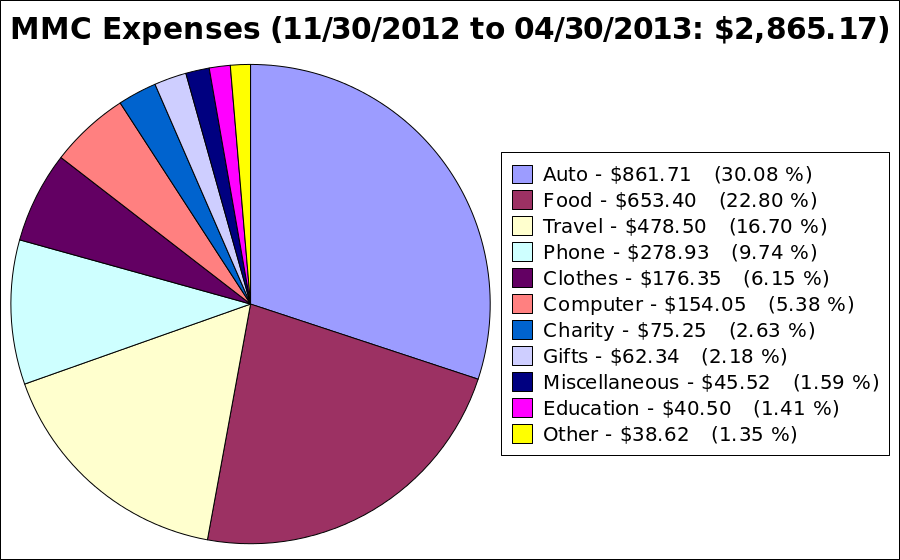I’d like to share with everyone how my expenses have matched the projected budget we had.
Projected Budget
Here was our best guess about how much it would cost me to be part of the project back in Nov 2012:
Expenses to Date
I’d like to take the time and share how well I have been able to live within the means of what was provided as well as how well the projected budget matched reality. First, here are the actual expenses I’ve had since leaving the UK:

One thing to point out is still running. We had orginally budgeted for 16 weeks, but by the time I leave the USA on April 26 I will have been here for a total of 20 weeks or 25% more than expected.
We overestimated the amount of driving that I would do each week, so fuel costs have been less than we budgeted, and I’ve been giving a lot of support with food, from free lunches at Mercy, community meals at Rhonda’s community, and dinners every weekend at my Mom’s. Also, I’ve lived simply and frugally (beans, rice, and tortillas go a loooong way when you supplement them with some organic chipotle salsa and fresh avocados 🙂
Other costs including clothing and sundries have been pretty much what we expected.
On the down side, we underestimated by a lot the cost of the return trip to the UK, so it will be double what we estimated ($900 instead of $400). Luckily because of a £200 voucher from British Airways, it brings this cost down to around $600. Also the cost of having a phone here in the US was more than twice what I thought it would be, and because I travel so much it has been a critical part of staying in touch with everyone.
So given that the length of stay is 25% longer than expected and that we’ve just about raised 65% of what we budgeted and that I’m happy and healthy, I think we’ve done an amazingly good job, don’t you?
What’s left?
I still have to support myself for the remaining three weeks in the US as well as purchase my plane ticket to the UK so I can complete my CNVC trainign over the next few months before returning and picking up things here.. Also, my two kids, Isa 20 and Adam 17, will come visit me for a week before I go. Luckily I have an amazingly generous supporter who is willing to match any donations I get from others with an equal amount of his money up to $1000!! I have already matched $600 of the matching funds, so I can still get access to $400. This makes any donations you give twice as effective! As my supporter said: “I want other people to experience the fun of supporting this project – I don’t want my offer to donate to stop others from also donating and miss out on the experience.” So, now you can double your fun 🙂
